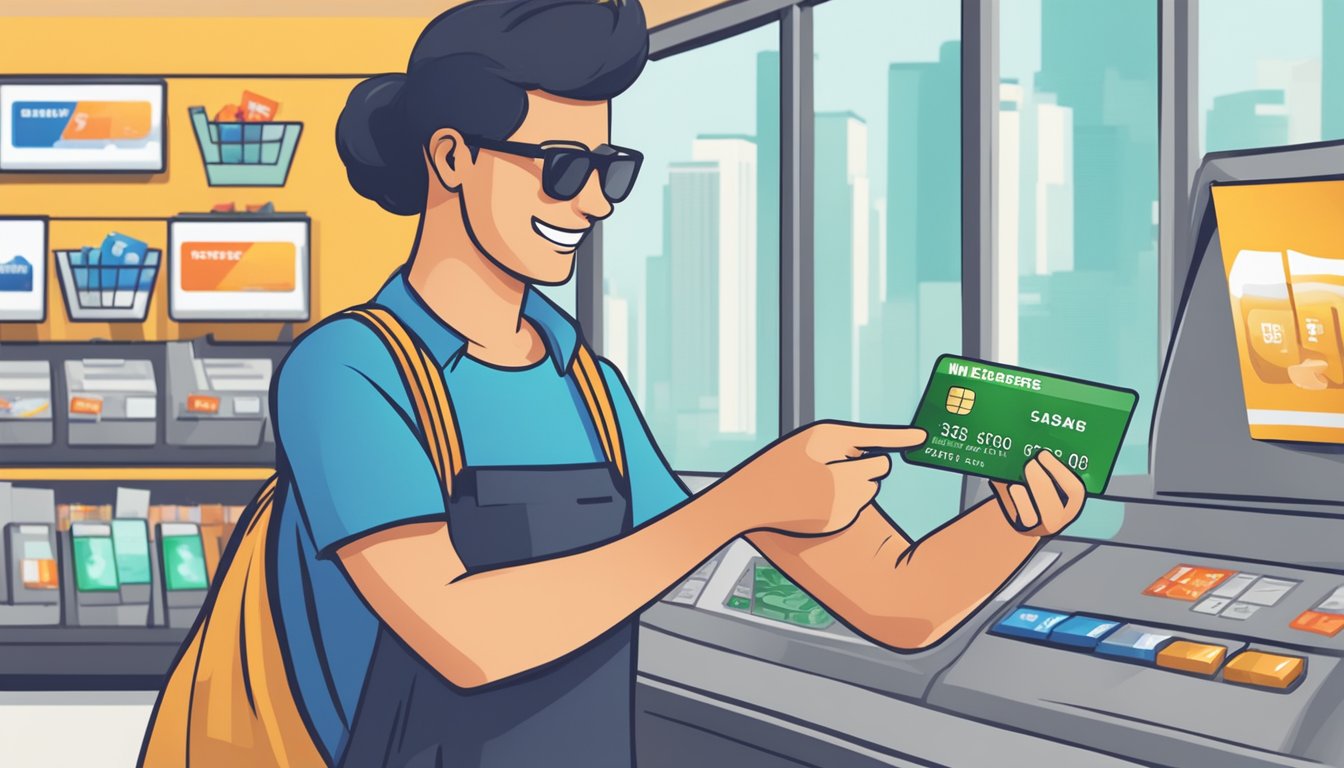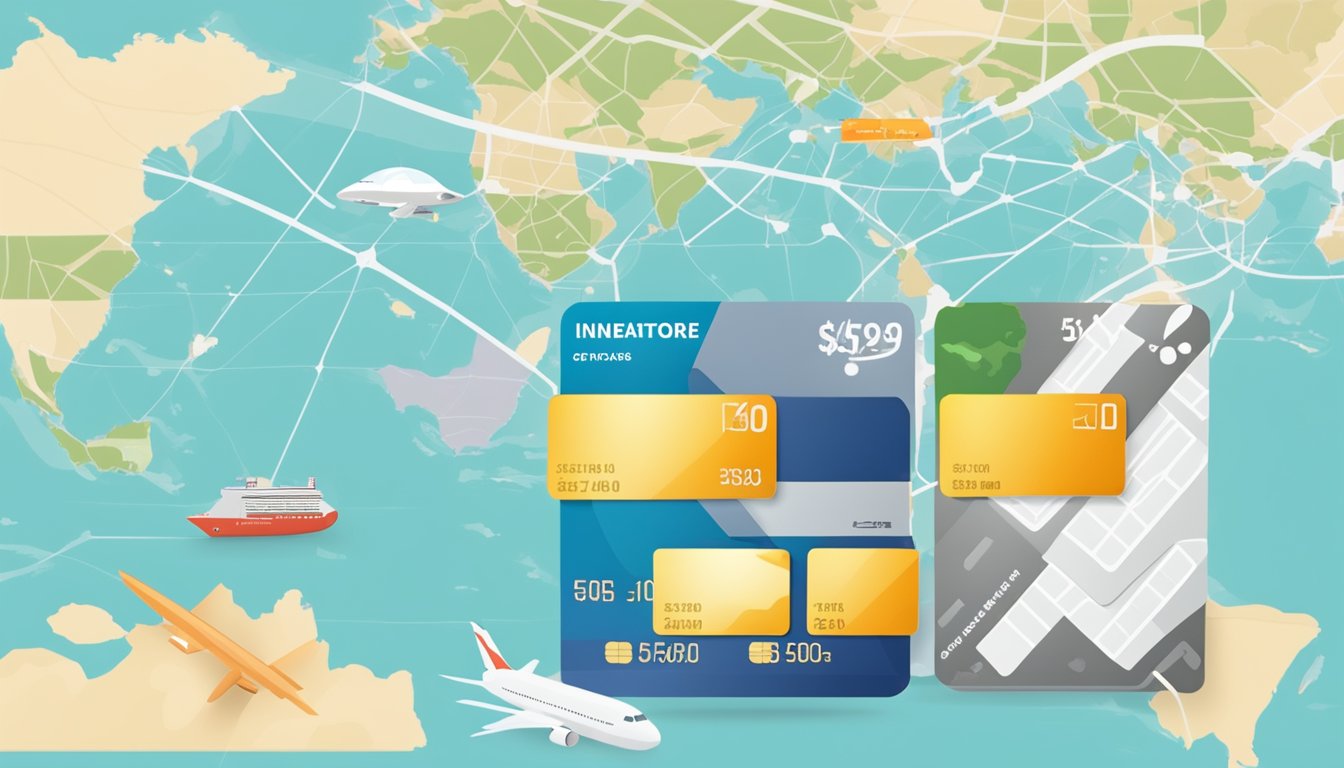Are you wondering whether to choose a miles or cashback credit card in Singapore? With so many options available, it can be challenging to decide which type of card is best suited for your lifestyle. Each type of card has its own unique benefits, and the choice ultimately depends on your personal preferences and spending habits.

Miles credit cards offer rewards in the form of air miles, which can be redeemed for flights, hotel stays, and other travel-related expenses. On the other hand, cashback credit cards offer cash rebates on your purchases, which are credited back to your account. Both types of cards have their advantages and disadvantages, and it’s important to understand how they work to make an informed decision.
When it comes to choosing between miles and cashback credit cards, there are several factors to consider. Your spending habits, lifestyle, and financial goals all play a role in determining which type of card is right for you. By understanding the differences between miles and cashback rewards, you can maximise your credit card benefits and choose the best credit card for your needs.
Key Takeaways
- The choice between miles and cashback credit cards depends on your personal preferences and spending habits.
- Miles credit cards offer rewards in the form of air miles, while cashback credit cards offer cash rebates on your purchases.
- Understanding the differences between miles and cashback rewards is key to maximising your credit card benefits.
Understanding Miles and Cash Back Rewards in Singapore

Basics of Credit Card Rewards
Credit cards are an essential tool for anyone in Singapore who wants to optimize their spending. They offer rebates, rewards points, and cashback on purchases made with them. Rewards points and cashback can be redeemed for a variety of benefits, such as discounts on future purchases, access to exclusive events, or even free flights.
Miles vs Cash Back: A Comparative Overview
When it comes to credit card rewards, two of the most popular options are miles and cashback. Miles credit cards offer rewards in the form of airline miles, which can be redeemed for flights, upgrades, and other travel-related expenses. Cashback credit cards, on the other hand, offer a percentage of your spending back in cash.
One of the advantages of cashback credit cards is that they are easier to understand and use. You earn a fixed cashback rate on all your spending, which is usually expressed as a percentage. For example, if your cashback rate is 1.5%, you will get $1.50 back for every $100 you spend.
Miles credit cards, on the other hand, are a bit more complicated. They offer an earn rate, which is the number of miles you earn per dollar spent. The earn rate can vary depending on the type of purchase you make. For example, you might earn 1 mile per dollar spent on regular purchases, but 2 miles per dollar spent on travel-related expenses.
To optimize the benefits of a miles credit card, you need to be strategic about how you use it. You should focus your spending on categories that offer the highest earn rate, such as travel-related expenses. You should also pay attention to the redemption options available to you. Some miles credit cards offer access to exclusive rewards catalogues, which offer better redemption rates than standard catalogues.
In conclusion, both miles and cashback credit cards offer their own set of advantages and benefits. The choice between the two ultimately depends on your spending habits and preferences. If you want a simple and straightforward rewards program, then a cashback credit card might be the right choice for you. If you are a frequent traveller and want to optimize your rewards, then a miles credit card might be the better option.
Maximising Your Credit Card Benefits

When it comes to choosing between cashback and miles rewards, both have their pros and cons. However, regardless of which type of credit card you choose, there are strategies you can use to maximise your rewards earnings.
Strategies to Optimise Reward Earnings
One of the most important things you can do is to understand your spending habits and choose a credit card that rewards you for your specific categories of spending. For example, if you spend a lot on dining out, look for a credit card that offers bonus rewards for dining purchases. Similarly, if you frequently travel, a credit card that rewards travel purchases may be a better fit for you.
Another strategy is to take advantage of sign-up bonuses and welcome offers. Many credit cards offer generous rewards for new cardholders who meet a minimum spend requirement within a certain timeframe. Be sure to read the terms and conditions carefully to make sure you can meet the requirements and earn the rewards.
You can also consider combining multiple credit cards to maximise your rewards earnings. For example, you could use a cashback card for everyday purchases and a miles card for travel-related expenses. Just be sure to keep track of your spending and pay off your balances in full each month to avoid interest charges.
Understanding Credit Card Terms and Conditions
To make the most of your rewards, it’s important to understand the terms and conditions of your credit card. Be aware of any restrictions or limitations on rewards earnings, such as caps on cashback or miles rewards or minimum spend requirements.
You should also be aware of any annual fees and whether they are worth the rewards you are earning. Some credit cards offer waived or discounted annual fees for the first year, so be sure to take advantage of these offers if they are available.
Finally, be sure to read the fine print and understand any other terms and conditions that may affect your rewards earnings. For example, some credit cards may offer discounts or vouchers for specific merchants or spending categories, while others may have restrictions on how you can redeem your rewards.
By following these strategies and understanding the terms and conditions of your credit card, you can maximise your rewards earnings and make the most of your credit card benefits.
Best Credit Cards for Lifestyle and Travel

When it comes to choosing the best credit card for lifestyle and travel, you need to consider your spending habits and travel frequency. Here are some of the best credit cards in Singapore that offer great rewards and benefits for frequent travellers and everyday spenders.
Top Cards for Frequent Travellers
If you’re a frequent traveller, you need a credit card that offers great travel perks and rewards. Here are some of the top cards for frequent travellers:
-
Citi PremierMiles Card: This card offers 1.2 miles for every $1 spent locally and 2 miles for every $1 spent overseas. You can also earn up to 10,000 bonus miles when you sign up and spend $3,000 within the first 3 months. The card also comes with travel insurance and lounge access.
-
KrisFlyer UOB Card: This card is great for KrisFlyer miles hoarders. You can earn up to 3 miles for every $1 spent on Singapore Airlines, SilkAir, and KrisShop. You can also earn up to 4 miles for every $1 spent on dining, petrol, and online shopping. The card also comes with travel insurance and lounge access.
-
DBS Altitude Visa Card: This card offers 1.2 miles for every $1 spent locally and 2 miles for every $1 spent overseas. You can also earn up to 10,000 bonus miles when you sign up and spend $3,000 within the first 3 months. The card also comes with travel insurance and lounge access.
Ideal Cards for Everyday Spending
If you’re an everyday spender, you need a credit card that offers great cashback and rewards for your daily expenses. Here are some of the ideal cards for everyday spending:
-
UOB One Card: This card offers up to 5% cashback on all spend categories, including groceries, dining, petrol, and online shopping. You can also earn up to $300 cashback per quarter when you spend at least $2,000 per month.
-
Citi Cash Back Card: This card offers up to 8% cashback on dining, groceries, and petrol. You can also earn up to $120 cashback per quarter when you spend at least $888 per month.
-
HSBC Revolution Card: This card offers 1.5 miles for every $1 spent locally and overseas. You can also earn up to $180 cashback when you sign up and spend $800 within the first month. The card also comes with great perks for online shopping and dining.
Overall, these credit cards offer great rewards and benefits for lifestyle and travel. Choose the one that fits your spending habits and travel frequency, and start earning rewards and cashback on your expenses!
The Impact of Spending Habits on Reward Accumulation

When it comes to choosing between cashback and miles credit cards, it’s important to consider your spending habits. Tailoring your card choice to your expenditure can help you maximise your rewards and get the most out of your credit card.
Tailoring Your Card Choice to Your Expenditure
If you’re someone who spends a lot on travel, then a miles card may be the best option for you. With a miles card, you can earn points for every dollar spent, which can be redeemed for flights, hotel stays, and other travel-related expenses. However, if you don’t travel frequently, a cashback card may be a better choice.
Cashback cards offer rebates on your spending, which can be redeemed for cash or statement credits. These cards are great for everyday spending, such as grocery shopping, dining out, and online shopping. Some cashback cards even offer higher cashback rates for specific categories, such as dining or groceries.
When choosing a cashback card, it’s important to consider the minimum spend required to earn the cashback. Some cards have a minimum spend requirement, while others offer cashback on all spending. The Citi Cash Back+ card, for example, offers up to 1.6% cashback on all spending, with no minimum spend requirement.
It’s also important to consider the earn rate of the card. Some cards offer a higher cashback rate for specific categories, but a lower rate for other spending. The American Express True Cashback card, for example, offers 3% cashback on all spending for the first 6 months, but then drops to 1.5% cashback after that.
In summary, when choosing between cashback and miles cards, it’s important to consider your spending habits and tailor your card choice to your expenditure. If you travel frequently, a miles card may be the best choice for you. However, if you don’t travel often, a cashback card may be a better option. Make sure to compare the pros and cons of each card, and choose the one that offers the most benefits for your lifestyle.
Navigating Changes and Trends in Reward Programmes

Reward programmes are constantly evolving, and it is important to stay up to date with the latest changes and trends. The COVID-19 pandemic has caused many restrictions and changes in the travel industry, which has affected the value of miles. As a result, cashback credit cards have become increasingly popular in Singapore.
Adapting to Market Fluctuations and New Policies
Credit card companies are constantly changing their rewards programmes to keep up with market fluctuations and new policies. It is important to keep an eye on the cashback cap and the conversion rate for miles to ensure that you are getting the best value for your rewards.
If you are looking for a miles credit card, the Citi PremierMiles card is a popular choice. It offers a high earn rate and easy redemption process. However, it is important to note that the value of miles can fluctuate depending on the destination and time of year.
On the other hand, cashback credit cards offer a more straightforward reward system. You earn a percentage of your spend back in cash, which can be used to offset your next purchase. SingSaver offers a comprehensive catalogue of cashback credit cards in Singapore, which can help you find the right one for your spending habits.
It is important to adapt to these changes and trends in reward programmes to ensure that you are getting the most value out of your credit card. Keep an eye on the latest updates and policies to make informed decisions about your rewards programme.
Frequently Asked Questions

What are the top-rated cash back credit cards available in Singapore?
If you’re looking for a cash back credit card, there are several options available in Singapore. Some of the top-rated cash back credit cards include the Standard Chartered Unlimited Cashback Credit Card, the Citi Cash Back Card, and the HSBC Advance Credit Card. Each of these cards offers different cash back rates and benefits, so it’s important to compare them carefully to find the one that best meets your needs.
How do you effectively compare cash back and miles rewards for credit cards?
When comparing cash back and miles rewards for credit cards, there are several factors to consider. These include the cash back or miles rewards rate, the annual fee, any sign-up bonuses or promotions, and any other benefits or perks that come with the card. To effectively compare these factors, you should first determine your spending habits and goals, and then use a credit card comparison tool or calculator to compare the different options available.
What are the advantages of choosing miles over cash back for frequent travellers?
If you’re a frequent traveller, choosing a miles rewards credit card may be more advantageous than a cash back credit card. With a miles rewards card, you can earn points that can be redeemed for flights, hotel stays, and other travel-related expenses. Additionally, many miles rewards cards offer travel perks such as lounge access, travel insurance, and discounts on travel bookings.
Can you convert credit card miles to cash back, and is it worth it?
Some credit card issuers allow you to convert your miles rewards to cash back, although the conversion rates may vary. Whether or not it’s worth it to convert your miles to cash back depends on your individual spending habits and goals. If you’re not planning on travelling anytime soon and would rather have the cash back, it may be worth considering. However, if you’re saving up your miles for a future trip, it may be more beneficial to hold onto them.
What’s the real value of 2x miles compared to 2% cash back on purchases?
The real value of 2x miles compared to 2% cash back on purchases depends on a variety of factors, including the redemption value of the miles and the cash back rate. Generally, miles rewards are more valuable when redeemed for travel-related expenses, while cash back rewards are more flexible and can be used for any type of purchase. It’s important to compare the redemption value of the miles and the cash back rate to determine which option is more beneficial for you.
Are there any credit cards that offer both miles and cash back rewards in Singapore?
Yes, there are some credit cards in Singapore that offer both miles and cash back rewards. These cards typically offer a lower cash back rate in exchange for earning miles rewards. Some examples of credit cards that offer both rewards include the UOB Preferred Platinum Visa Card and the Maybank Family & Friends Card.




